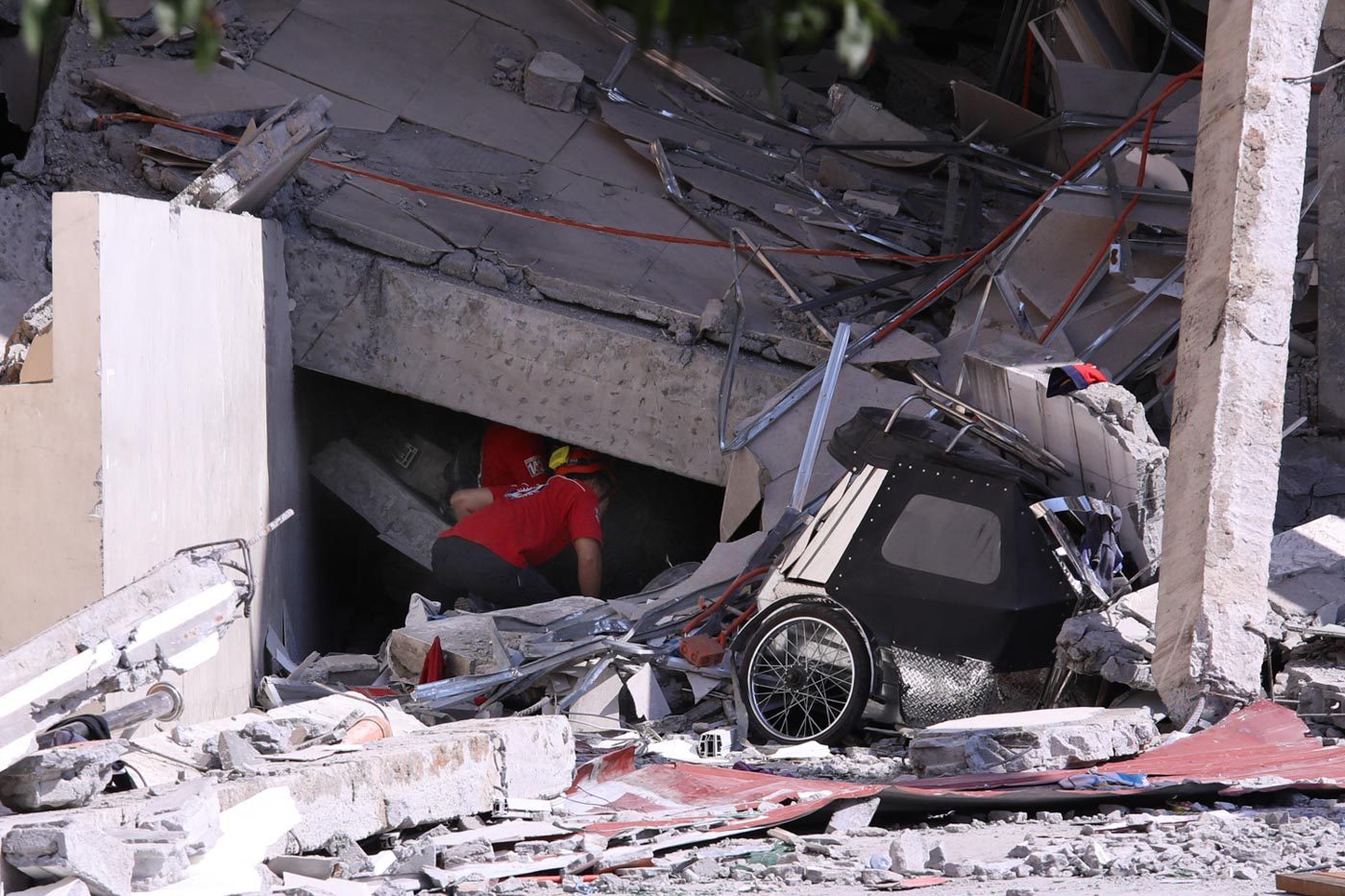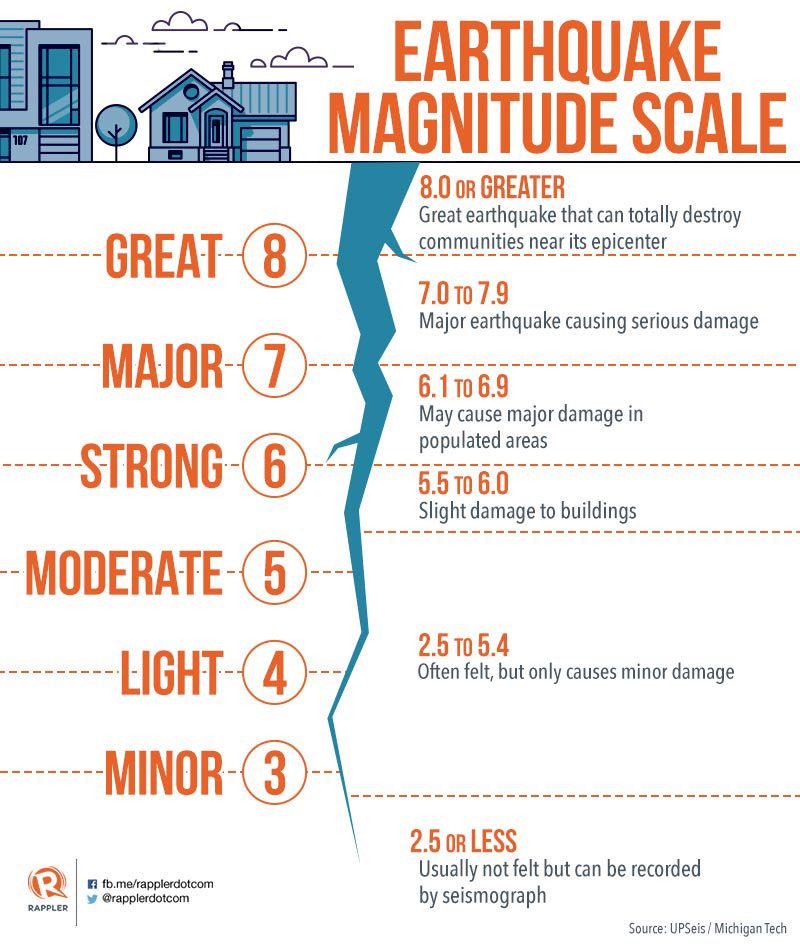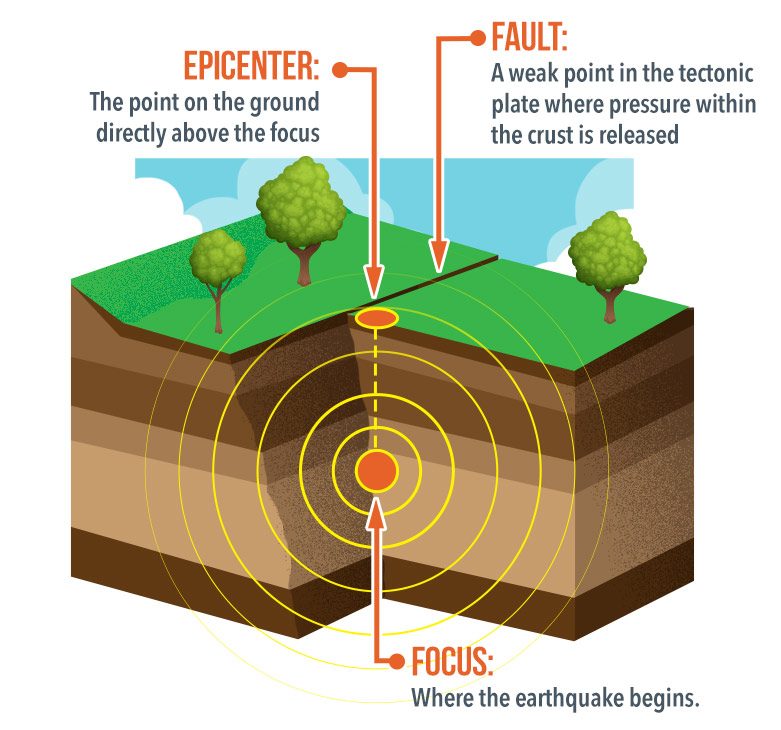SUMMARY
This is AI generated summarization, which may have errors. For context, always refer to the full article.

MANILA, Philippines – Two strong earthquakes rocked the Philippines on Monday, April 22, and Tuesday, April 23, leaving 16 dead and scores injured. Many structures were also damaged as a result of the quakes.
The Philippine Institute of Volcanology and Seismology (Phivolcs) has cautioned the public about aftershocks and has issued reminders about earthquake preparedness.
Here are some terms related to earthquakes you may have heard in the news:
Magnitude. It’s used to measure the size of an earthquake. It is most commonly measured with the Richter scale, whose information comes from a device called the seismograph. The seismograph is a device that registers movements once an earthquake occurs.

Can the magnitude of an earthquake change? In the reporting that followed the two earthquakes that hit Luzon and the Visayas, both magnitudes were raised after initial reports. In the Luzon quake, the earlier report put the magnitude at 5.7, but was later revised to 6.1. In the Visayas quake, the earlier magnitude was reported at 6.1 but later became 6.5.
This does not mean that the magnitude changed, or that the earthquake grew stronger as it was happening. Rather, it means that seismometers had captured more information about the earthquake, and that the magnitude recorded at the moment of the quake was not yet the complete picture.
Intensity. Represented by Roman numerals I through X, intensity marks how much damage was done on the earth’s surface, structures, and humans. In the Philippines, Philvolcs uses what is called the Phivolcs Earthquake Intensity Scale or PEIS to measure the intensity of an earthquake.
Focus. Also called the hypocenter, this is where the earthquake originated from – underground or on the fault zone. The Philippine fault zone (PFZ) extends 1,200 km across the archipelago. It cuts across the Philippines from northwestern Luzon to southeastern Mindanao. The PFZ is divided into several segments. Mapping of the entire PFZ is an ongoing project, with 90% of the on-land-stretch mapped.
Epicenter. The epicenter is the area on the surface of the earth that is directly above the focus or hypocenter. Usually, this epicenter sustains the most damage.
However, in the case of the April 22 earthquake whose epicenter was in Zambales, the hardest hit areas were in Pampanga. Phivolcs explained that this was because the soil in Pampanga was softer and therefore more prone to damage. As such, factors like these figure in the extent of damage caused by an earthquake in various places where it is felt.
Fault. A fault is a weak point in the tectonic plate where pressure within the crust is released. This pressure can cause an earthquake. An active fault is one that may potentially cause an earthquake in the future. One of the most geologically active fault lines in the Philippines is the Marikina Valley Fault System, consisting of the West Valley Fault and the East Valley Fault.

Aftershock. An aftershock is a smaller earthquake that may occur after a bigger or main quake. Not all earthquakes have aftershocks, but there is such a thing as an earthquake swarm, which are quakes that happen over months without being followed by a larger quake. – Rappler.com
Sources:
https://www.gns.cri.nz/
https://www.phivolcs.dost.gov.ph/
http://cnnphilippines.com/
https://earthquake.usgs.gov/
http://bigislandnow.com/
https://www.ses.vic.gov.au/
https://www.cbc.ca/
Add a comment
How does this make you feel?
There are no comments yet. Add your comment to start the conversation.